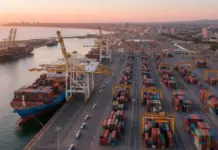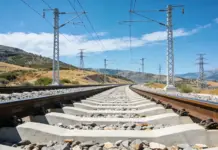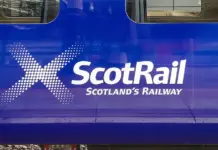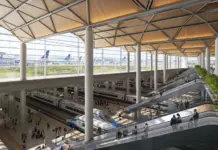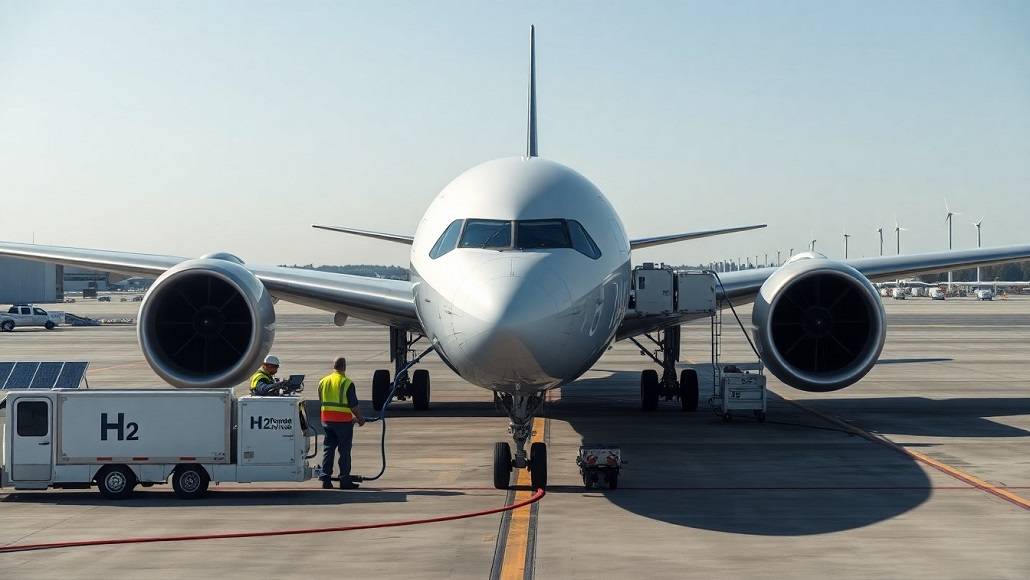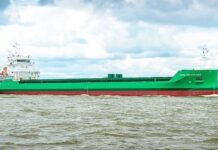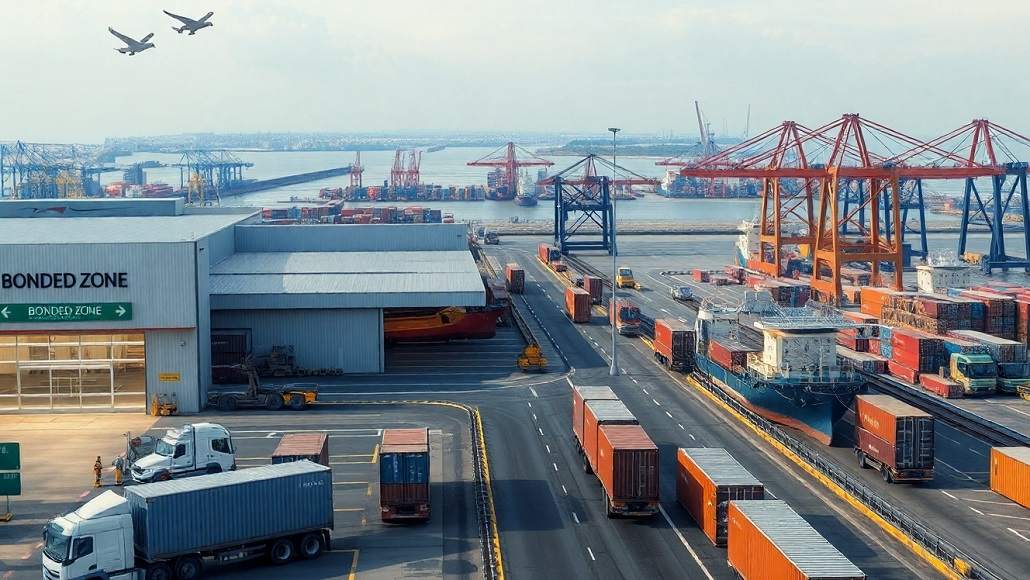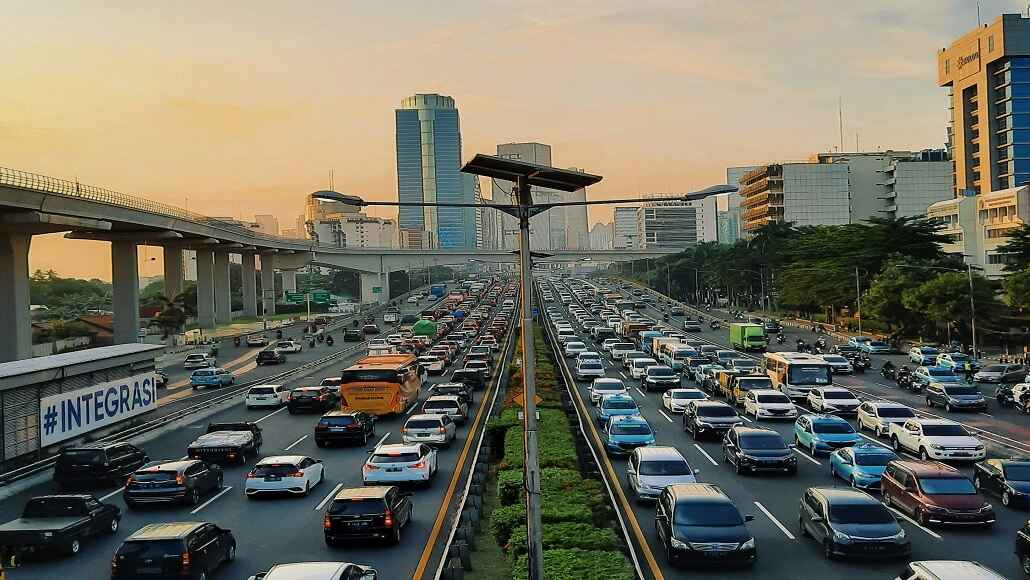The Big Dig in Boston, Massachusetts, US, is a massive road infrastructure project which was undertaken to improve the flow of traffic, alleviating chronic congestion across Boston and the surrounding commuter areas, and to replace the outdated elevated Central Artery road that effectively split the city in half, alienating the North End and Waterfront neighbourhoods from the economic life of the city.
The Central Artery / Tunnel Project (CA/T), undertaken by the Massachusetts Turnpike Authority, commenced in 1991. The cost of the project when completed in December 2007 was estimated at $14.8bn. The actual cost of the project was made public in July 2012 by the Massachusetts Department of Transportation and is estimated at more than $24bn. The state currently pays over $100m annually in debt service for the project which is likely to continue till 2038. It still owes about $9.3bn in both principal and interest.
The Big Dig proved to be one of the most technically-challenging infrastructure developments ever undertaken in the US and consisted of two major projects:
- Existing Central Artery, an elevated six-lane highway, replaced by an extended subterranean highway, and a 14-lane two bridge crossing of the Charles River at the northern end
- Extension of the Massachusetts Turnpike (Interstate 90) from its former end, south of downtown Boston, through a tunnel (Ted Williams Tunnel) under South Boston and Boston Harbor to Logan AirportBoston’s Central Artery
The elevated Central Artery (Interstate 93) was built in 1953 and opened in 1959 with six lanes to comfortably accommodate 75,000 vehicles a day. However, it has regularly carried in excess of 200,000 vehicles a day. As a result, central Boston was subjected to traffic jams for more than 10 hours a day (a waste of over $500m per year on fuel burnt by idling engines and late deliveries).
The elevated highway was demolished, freeing up 29 acres for attractive boulevards and parks, and was replaced by an eight to 10-lane underground expressway which leads into a 14-lane, two-bridge crossing at the Charles River.
The road system was designed and constructed to accommodate 245,000 vehicles each day.
The northbound Central Artery tunnel started to carry traffic in March 2003, while the southbound lanes were opened in December 2003, allowing for the completion of the largest of the Charles River bridges. Eight lanes were open (four northbound and four southbound) at the end of 2003, with the final two lanes opened in early 2005.
Charles River bridges
The larger of the two Charles River bridges, a 10-lane, cable-stayed hybrid bridge, is the widest ever built and the first to use an asymmetrical hybrid design (using steel and concrete). It has been named the Leonard P. Zakim Bunker Hill Bridge. Built at a cost of $100m, it serves the underground Central Artery.
The Florida Department of Transportation (FDOT) is building a new corridor to connect the Interstate 4 (I-4) highway with Lee Roy Selmon Crosstown Expressway.
The bridge, providing a spectacular landmark gateway to the city, was opened in stages. Four lanes of I-93 northbound were opened to traffic in March 2003. Four lanes of I-93 southbound were opened in December 2003, while the remaining two lanes opened in early 2005.
With its graceful lines and 270ft towers, the Leonard P. Zakim Bunker Hill Bridge succeeds in linking the past and future of Boston. Swiss bridge designer Christian Menn conceived the bridge to reflect, with its inverted Y-shaped towers, the shape of the Bunker Hill Monument in neighbouring Charlestown. The bridge’s cables are suggestive of a ship in full sail linking it to East Boston as a centre of shipbuilding.
The bridge, at 1,432ft long, emerges from the underground Central Artery near the Fleet Center at Causeway Street, crossing the river to make connections with both I-93 and Route 1. The bridge is designed to carry ten lanes of traffic with eight lanes passing through the legs of the twin towers and two cantilevered on the east side.
The cantilever portion, which accommodates northbound traffic from the Sumner Tunnel and the North End, provides the bridge’s unique, asymmetrical design. Girders, floor beams and two planes of cables support the bridge’s 745ft-long, 183ft-wide main span. Steel floor beams, which support the main span, are extended out to support the cantilevered lanes.
The Leonard P. Zakim Bunker Hill Bridge is unique. In addition to being the widest cable-stayed bridge in the world, the bridge is the first ‘hybrid’ cable-stayed bridge in the US, using both steel and concrete in its frame. The main span consists of a steel box girder and steel floor beams, while the back spans contain post-tensioned concrete.
The smaller, four-lane Leverett Circle Connecter Bridge was opened to traffic in October 1999 at a total cost of $22.27m. This 830ft-long bridge connects the Leverett Circle area on the northwestern edge of downtown Boston with points north of the Charles River. Nine box girder sections, the largest in North America, were barged into place and raised into place by cranes or (in the main span) jacks.
The main span length is 380ft and the back span length is 225ft while the width is 76ft. The superstructure consists of single steel box girder, 18ft deep at the piers, nine feet deep at centre span, and a concrete bridge deck. The substructure consists of two water piers and two land bents, cast-in-place and supported on drilled shafts.
Interstate 90 extension and highway interchanges
The Massachusetts Turnpike (I-90) Extension opened to traffic in January 2003. The I-90 now runs from Seattle, Washington, to Logan International Airport in East Boston. In Massachusetts, the MassPike now runs 138 miles from the New York border to Route 1A in East Boston.
As a result of the extension, the MassPike runs from its previous terminus at I-93 near South Station to the Fort Point Channel and South Boston before connecting to the Ted Williams Tunnel. Motorists from south and west of Boston have direct access to Logan Airport and Massachusetts’ North Shore via the I-90 eastbound. This direct, 3.5 mile route to the airport saves drivers as much as 45 minutes off the previous route.
The new I-90 interchange in South Boston also provides direct access to the centre of a vital new development area for the Boston seaport, which features the newly opened Massachusetts Convention Center. One of the features of the project has been the relief of cross-town traffic congestion through better traffic distribution and an improved street system.
The construction of the I-90 extension involved some of the most complicated and challenging engineering on the Central Artery / Tunnel Project. It required tunnel jacking, the construction of a casting basin for immersed tube tunnelling and cut-and-cover tunnel construction.
The project also included five major interchanges to connect the new roads and the existing regional highway system. These are located at Logan Airport, South Boston, Massachusetts Avenue, the Tobin Bridge and in South Boston, where the Central Artery meets the turnpike extension.
At the Southern end of the underground highway the I-90 / I-93 interchange has been rebuilt on six levels to connect with the new Central Artery and the turnpike extension through South Boston. This interchange carries a total of 28 routes to and from Logan Airport and to the East.
There were many impact-mitigation projects (transit, pedestrian, bicycle and parks) that remained incomplete and were initially considered for suspension due to the overrun on the budget. The final ramp downtown (exit 20B from I-93 south to Albany Street) opened on 13 January 2006.
In 2006, the two Interstate 93 tunnels were dedicated as the Thomas P. O’Neill Jr. Tunnel, after the former Democratic speaker of the House of Representatives from Massachusetts who campaigned for the Big Dig to be funded by the federal government.
Ted Williams Tunnel
The four-lane Ted Williams Tunnel forms part of the I-90 extension link. The $1.3bn tunnel was named after the legendary Boston Red Sox baseball player. It was the first major target of the Big Dig to be completed, opening to commercial traffic in December 1995.
Providing transport under the harbour, the underwater part of the Ted Williams Tunnel was built using 12 steel sections sunk in a trench to cover the 0.75 mile distance. The tunnel is now fully connected to all its major routes and has the capacity to double cross-harbour traffic.
Traffic monitoring and incident response
A highly advanced traffic monitoring and incident response system is in place to ensure the smooth operation of the road infrastructure.
Route 141 is located in the western St. Louis metropolitan area of Missouri, US.The CA/T’s Operations Control Center (OCC) has one of the most advanced ‘smart highway’ systems in the world. The system uses a range of ITS devices.
The OCC can monitor all of the traffic in the tunnels, ramps and highways constructed as part of the Big Dig, as well as the majority of other roads and tunnels in Boston.
The equipment and facilities used by the OCC include more than 1,400 loop detectors to measure traffic density and identify and project traffic patterns, 430 CCTV cameras, 130 electronic message signboards, 300 lane control signals and carbon monoxide detectors.
The computer system has more than 35,000 data points from which to collect data to compile a detailed picture of traffic events. This enables the OCC to effectively manage traffic flow, incidents, ventilation, security, fire detection and emergency response.
Constructing Boston’s Central Artery
The overall design and construction management for the Big Dig has been provided by a joint venture of Bechtel, Parsons Brinckerhoff, Quade and Douglas. The project included many subcontractors.
Major heavy-construction contractors on the project included Jay Cashman, Modern Continental, Gannett Fleming Inc, Obayashi Corporation, Perini Corporation, Peter Kiewit Sons’ Incorporated, J.F. White and the Slattery division of Skanska USA (Modern Continental was awarded the largest value of contracts). Power Fastners provided an epoxy system to hold up concrete roof panels.
Controversy regarding the Big Dig
The project has incurred criminal arrests, escalating costs, leaks, poor execution and use of substandard materials. The Massachusetts Attorney General demanded that the contractors refund taxpayers $108m for ‘shoddy work’.
There were problems with the tunnel as far back as 2001. The Massachusetts Turnpike Authority was aware of many thousands of leaks in the ceiling and wall fissures causing extensive water damage to steel supports and fireproofing systems, as well as also overloading the drainage systems.
An initial $10m contract, signed off as a cost overrun, was used to repair these leaks. Many of the leaks were found to be a result of contractors such as Modern Continental failing to remove gravel and other debris before pouring concrete.
On 15 September 2004, a major leak in the Interstate 93 north tunnel forced the closure of the tunnel while repairs were conducted.
This incident also forced the Turnpike Authority to release previous information regarding prior leaks. A follow-up reported on ‘extensive’ leaks went on to state that the tunnels were riddled with more than 400 serious leaks.
Causes of the problems
In June 2005 Massachusetts State Police were called in to search the offices of Aggregate Industries, the largest concrete supplier for the underground portions of the project.
The police obtained evidence of fraudulent records that hid the poor quality of concrete delivered for the highway project.
In May 2006, six executives of the company, including its general manager, were arrested and charged with fraud.
In March 2006 it was reported that Massachusetts Attorney General Tom Reilly planned to sue Bechtel / Parsons Brinckerhoff and other companies for more than $100m because of poor work on the project.
In excess of 200 complaints were filed by the state of Massachusetts as a result of leaks, cost overruns, quality concerns and safety violations.
Big Dig ceiling collapse controversy
In July 2006 part of the ceiling collapsed in a tunnel segment under South Boston, connecting I-90 to the Ted Williams Tunnel. The collapse killed one person (Milena Del Valle) and contributed to the death of another (her husband). The car was partially crushed under at least four ceiling panels, each weighing 3t. At least 26t of concrete fell from the ceiling of one of the tunnels. A steel tieback that held a 40ft ceiling section above Interstate 90 eastbound had given way.
The accident was investigated by the National Transportation Safety Board and they concluded that the wrong type of epoxy system had been used to hold up concrete ceiling panels. The epoxy holding support anchors holding the panels slowly pulled away and eventually gave way.
Power Fasteners was charged with involuntary manslaughter and has agreed to pay the Del Valle family $6m.
The tunnel was closed as work went on to remove about 30 ceiling slabs in a 200ft section where the collapse occurred. The incident raised safety questions and closed part of the project for most of the summer of 2006. In September 2006, one eastbound lane of the connector tunnel was reopened to traffic. Following extensive inspections and repairs, Interstate 90 east and westbound lanes reopened in early January 2007.
Blame and reparation
In late January 2008 the conclusion of the ‘Big Dig’ court wrangling finally came to a partial conclusion. The contractors on the project have agreed to pay a sum of more than $450m to cover the lawsuit against them for leaks and design flaws and also because of the tunnel roof collapse which cost two lives.
Bechtel / Parsons Brinckerhoff (design and project management) will pay $407m and a number of smaller companies are due to pay a total of $51m between them. If there is any future problem (structural defect) then the state can claim up to $100m more from Bechtel / Parsons Brinckerhoff but this would be decided by arbitration.
Latest developments at Big Dig
The project still continues to be plagued by controversy. In 2011, a 110lb light fixture fell in one of the tunnels. Plans are now being made to replace the lighting system with new LED fixtures.
The replacement project is expected to begin in 2013 at a cost of $200m. The maintenance fund of the original Big Dig contractors will be used to complete the project. The replacement work is expected to hamper traffic movement for the next two or three years.


